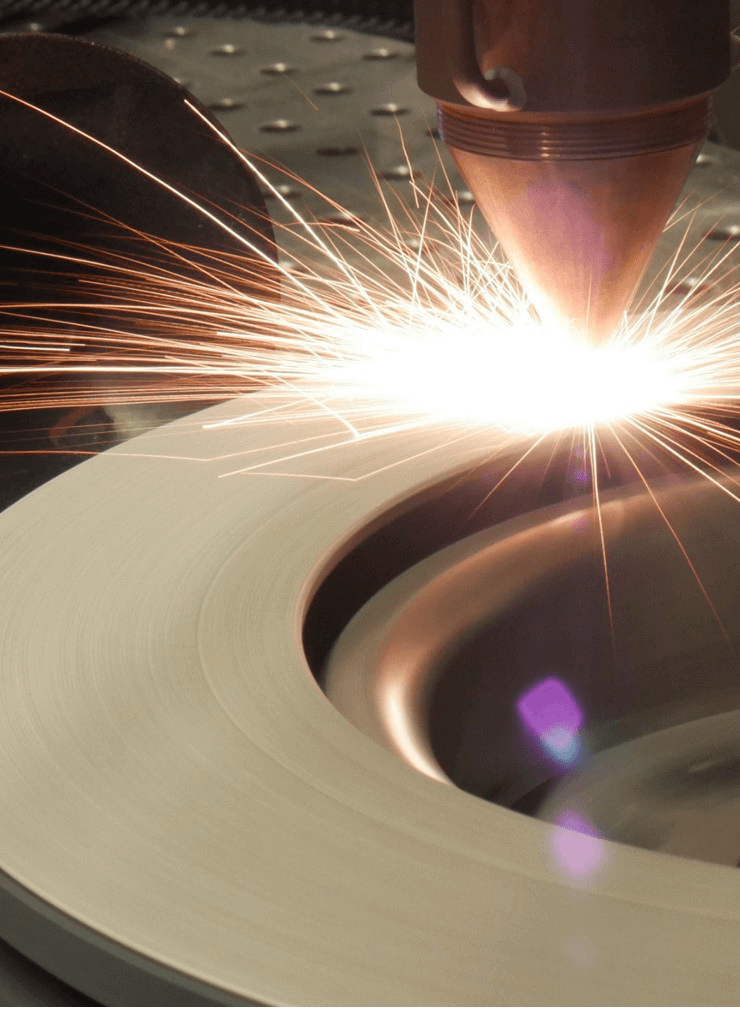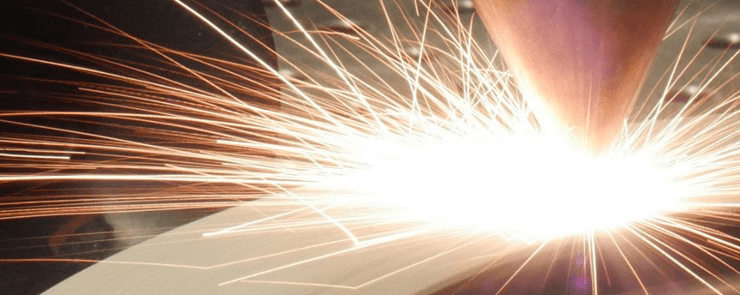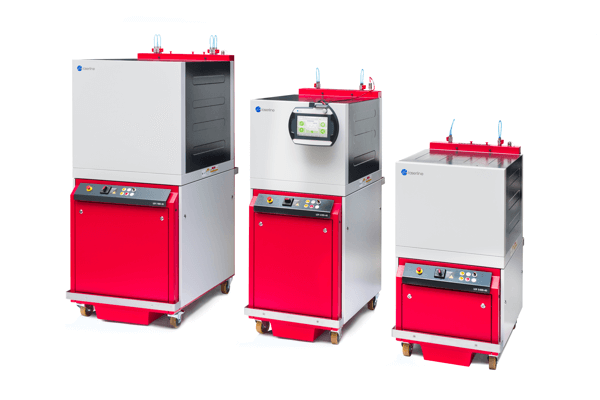New developments and techniques in high speed laser cladding are reducing fine dust emissions and extending the life and performance of brake discs.

It is also expected that a legal limit for fine dust particulates may be forthcoming, with the risks of asthma, respiratory, cardio-vascular disease and allergies resulting from human in-take The automotive industry is therefore looking to address this issue, through technology improvements.
Hard material coatings applied by new laser cladding processes and techniques make a solution possible, one that offers high wear and corrosion resistance on automotive brake discs. In addition to these improvements – this process serves to extend the life of these parts considerably. It’s a minor cosmetic point, but this technology also helps keep alloy wheels cleaner.
In the laser industry – wear resistant coatings applied by laser processing have helped protect heavily loaded components from abrasion, however they have hardly ever been used for conventional automotive brake discs. Corrosion protection coatings have been used, but only the niche end of the luxury sports car industry has used coating techniques to enhance wear protection. The reason for this is quite simply down to the costs.
Laser cladding in its standard form is not considered a viable option, as the speed of coverage achieved, is just not fast enough for mass produced parts. Therefore the need established was to create and develop a process that would allow the high speed laser cladding of highly protective, wear resistant coatings, to reduce dust emission and enhance wear resistance; whilst also enhancing the life of the part.
Using high levels of laser power individual layers can now be applied to brake discs in around 30 seconds – depending of course on the disc size, material and the thickness of the layer applied. This is only possible with a minimum energy input and a correspondingly low level of mixing, between the disc material and the coating layer. With the laser beam and nozzle positioned perpendicular to the workpiece, the coating material is melted together above the base disc material, bonding on contact. In the evolving molten bath the two materials mix to form a metallurgical composite layer that after cooling is highly stable. The component does of course need to be rotated at high speed under the laser head / powder feeder.
The coating is carried out in two steps, with a buffer layer applied; to offer corrosion resistance, followed by a second layer of carbide material; to offer the actual wear resistance coating. Processing time for the two coating steps combined, was achieved on different samples in times ranging from under 3 minutes, up to 5 minutes.
The Laserline LDF high power diode laser systems have a laser beam, with a highly homogeneous intensity distribution, that was found to be essential to get the optimum results for this process. To reach the speeds and the coating rates required, large spot sizes were necessary. Diode lasers with a beam parameter of 110 – 220mm / mrad and spot diameters of 3 to 14mm were tested successfully. This was without defocusing or reducing the quality of the laser beam. This setup made it possible to achieve a uniform melting of the grey cast iron layer, with controlled mixing between the coating and the base material.
To optimize throughput and reduce cycle times it was possible to increase the output power without altering the beam quality, which is a useful financial option to offer potential customers, that could help to reduce the investment cost (or where investment is less of an issue), increase the potential throughput.
Being far more efficient in terms of energy consumption and material usage, than alternative techniques (such as thermal spraying), it was also found that this new high speed laser cladding technique also requires less preparation, whilst also proving suitable for thin carbide coatings of conventional grey cast iron brake discs. Making the process more affordable for the mass market. Powder efficiency was recorded at between 80 and 90%, making it more efficient than thermal spraying and similar techniques.
The final costs for the laser coated brake discs are higher – but the increase in the life of the new laser coated parts, means the additional costs can extend the life and performance of the brake disc part considerably. In addition, the applied laser coatings have a reduced shock and impact sensitivity, when compared to thermal sprayed parts. Whilst the sprayed coatings result in a layer that is mechanically bonded to the base material, the laser coatings form a metallurgical bond with the grey cast iron base material.
The laser process development work undertaken has proven that a significant reduction in brake dust emission is possible, whilst improvements in the performance and life of the brake discs can also be achieved, at speeds that allow mass production rates to be met.
Laser Lines, Banbury is the distributor for Laserline, Germany and can help and assist companies interested in assessing this technology further and discussing the environmental and performance related improvements that can be realised.


